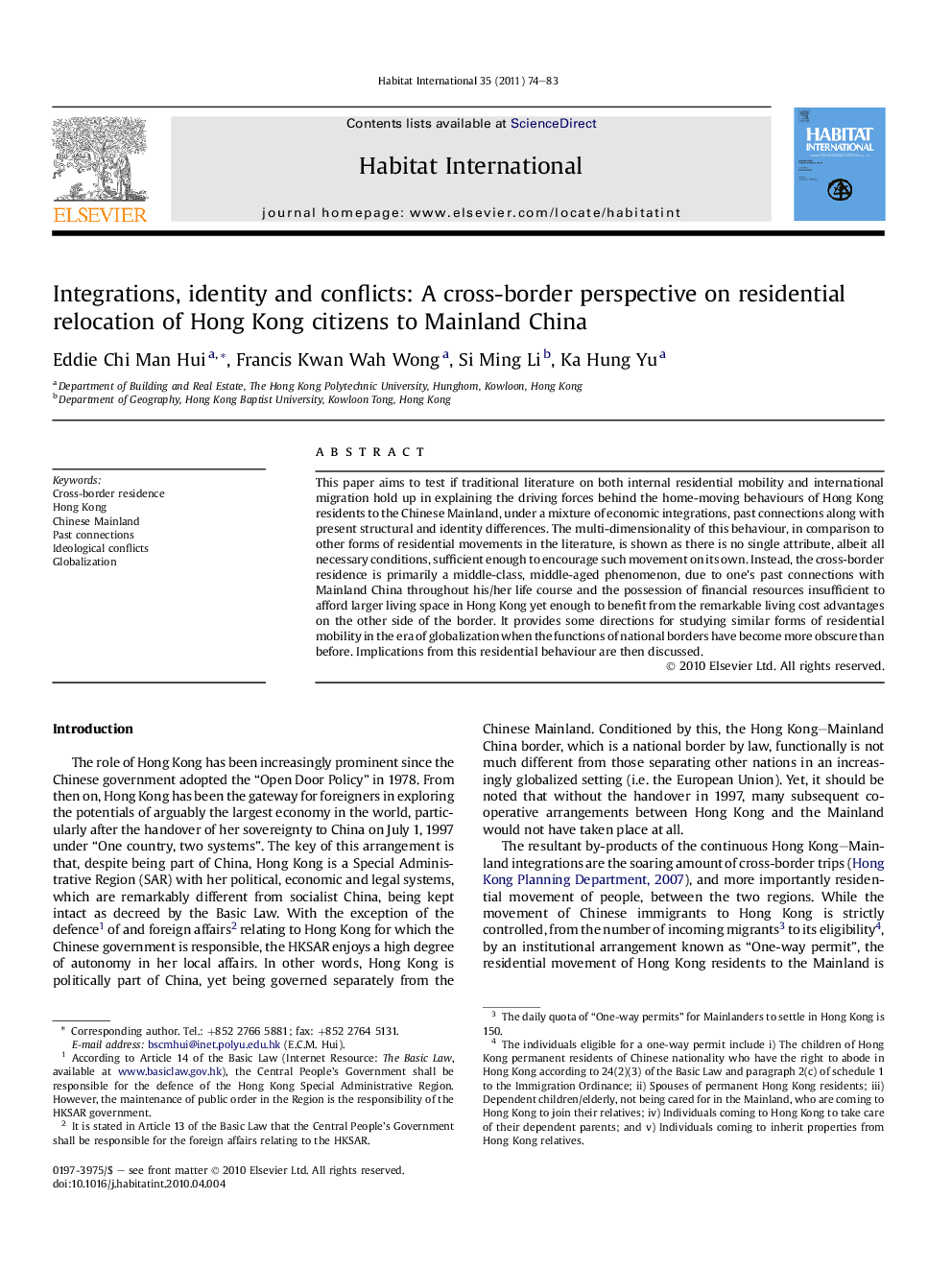| Article ID | Journal | Published Year | Pages | File Type |
|---|---|---|---|---|
| 1048432 | Habitat International | 2011 | 10 Pages |
This paper aims to test if traditional literature on both internal residential mobility and international migration hold up in explaining the driving forces behind the home-moving behaviours of Hong Kong residents to the Chinese Mainland, under a mixture of economic integrations, past connections along with present structural and identity differences. The multi-dimensionality of this behaviour, in comparison to other forms of residential movements in the literature, is shown as there is no single attribute, albeit all necessary conditions, sufficient enough to encourage such movement on its own. Instead, the cross-border residence is primarily a middle-class, middle-aged phenomenon, due to one’s past connections with Mainland China throughout his/her life course and the possession of financial resources insufficient to afford larger living space in Hong Kong yet enough to benefit from the remarkable living cost advantages on the other side of the border. It provides some directions for studying similar forms of residential mobility in the era of globalization when the functions of national borders have become more obscure than before. Implications from this residential behaviour are then discussed.
